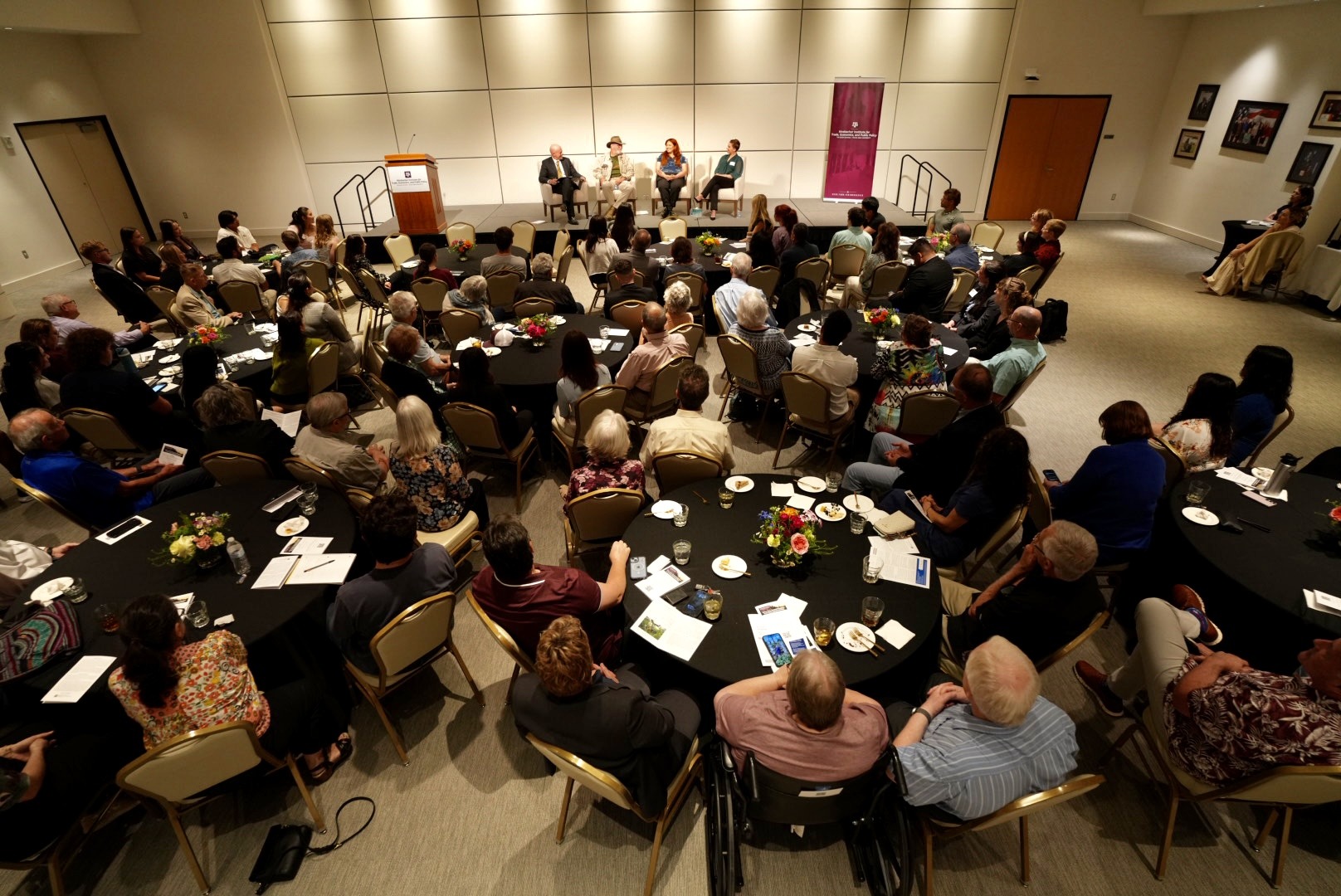
By Clay Johnson, Bush School MPSA Student.
On Thursday, April 17, 2025, the Mosbacher Institute for Trade, Economics, and Public Policy at the Bush School of Government and Public Service at Texas A&M University hosted a panel discussion entitled “Home to Rest: Research Perspectives on the Border Humanitarian Crisis” as part of their Conversations in Public Policy series. The discussion offered insights into issues of clandestine migration, provided by researchers and practitioners who are working to address a crisis of preventable migrant deaths in the South Texas border region. Panelists included Don White, a Brooks County, Texas, reserve sheriff’s deputy; Victoria Soto, a doctoral research assistant with Operation Identification (OpID) at Texas State; and Emma Newman, a doctoral candidate at Texas A&M University and a Mellon Foundation Crossing Latinidades Fellow. Dan DeBree, Bush School Associate Professor of the Practice in Homeland Security and National Defense, served as moderator. The discussion was preceded by a screening of a short film about the humanitarian crisis in Brooks County.
The panelists discussed the ongoing situation in Brooks County as a microcosm of a broader issue along the United States-Mexico border. Since 2009, nearly 1,000 migrants have died attempting to circumvent a U.S. Border Patrol checkpoint in Brooks County, succumbing to dehydration and extreme temperatures in the harsh terrain. Deputy White spoke about the challenges involved with searching for migrants who become medically distressed and recovering the remains of those who perish.
“The speed with which you can search is based on the environment,” said White. “If you’ve got tall grass, you’ve got to walk really slow and your grid is very tight, so it takes a long time.”
Newman emphasized another inherent difficulty in locating both distressed migrants and remains—undocumented individuals actively seek to avoid detection. “If you’re trying to enter this country unofficially, the idea is to not be found,” said Newman. “When you’re in a state of distress, no one knows the best place to look.”
Soto discussed the process of identifying the remains of deceased migrants and returning them to their families. OpID uses forensic techniques and investigative methods to identify remains, including taking DNA samples and searching missing persons databases. Soto spoke about the personal nature of this work and the importance of bringing closure to family members who have been searching for their loved ones, sometimes for years.
“I could hear the weight being lifted off her shoulders,” said Soto of informing a woman that OpID had identified a set of remains as her missing son. “She said, ‘It’s been two years, and now at least I know where he is.’”
The introduction of new technologies has helped in the search and identification of remains, such as Brooks County’s acquisition of a drone with a thermal-imaging camera and improvements in DNA processing times. Still, much of the work to find, recover, and identify decedents relies on tedious and time-consuming methods. Deputy White spoke of “brute searching” thousands of acres looking for remains, and Soto explained how she often tries to identify decedents through internet searches based on their tattoos, clothing, or physical characteristics.
The panelists also spoke about the funding challenges that complicate their work. Newman discussed how Brooks County has received little money from the state or federal governments to fund its search and recovery efforts due to an emphasis on enforcement tactics at the southern border which have tended to overshadow humanitarian responses. According to Newman, this results in minimal funding for recovery and identification initiatives in border counties. Brooks County was cited as the only county in Texas which employs an official–Deputy White–dedicated solely to search and recovery.
To Deputy White and Newman, more funding can help address current crises, but only major policy changes can stem the underlying issues. They suggested reforms to allow greater numbers of unskilled migrant laborers to enter the United States, alleviating the need for so many to attempt the dangerous, clandestine journey north. Deputy White, Newman, and Soto agreed that what is needed most is better awareness of the issue and of their collective mission: to reduce suffering. “Most people have no understanding of what this is about,” said Deputy White. “We’re finding people and sending them home. What’s bad about that?”
Ongoing research at the Bush School of Government and Public Service seeks to provide solutions for Brooks County that will improve the success of rescue efforts and speed the recovery and repatriation of remains. Between this research and opportunities like Conversations in Public Policy, crucial awareness is being raised about the importance of the border humanitarian crisis.
